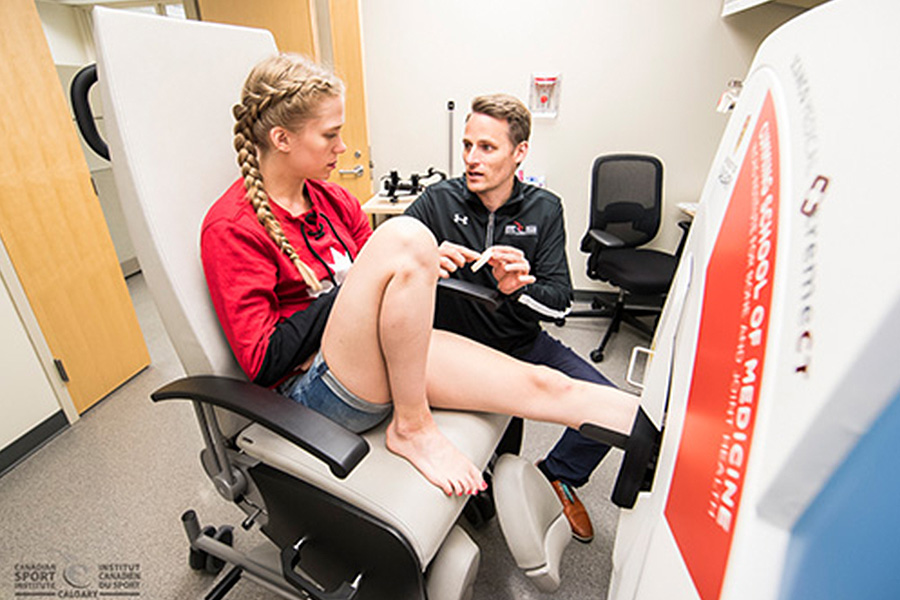
Figure skating fans are a passionate lot. They hold their collective breath in anticipation of every jump. Time seems to stand still as they watch a skater spin through the air at impossible heights. They sigh with relief if the landing is clean, then cheer with wild abandon. They wince in disappointment and concern if the skater crashes to the ice, then urge them to get up and keep going.
It is unlikely, however, that any of them have put much thought into what is happening to the skaters’ bones.
In fact, there is a lot happening and Erik Groves, Research and Innovation Lead at CSI Calgary, has thought a lot about those bones and the stress they endure from landing jump after jump after jump. To find out more, Groves has spearheaded a research study looking at bone density in Canada’s top figure skaters.
In collaboration with the McCaig Institute for Bone and Joint Health at the University of Calgary Cumming School of Medicine, Skate Canada and Own the Podium (OTP), the study will examine the relationship between training frequency, impact load, nutrition and bone microarchitecture.
Ultimately, the research study aims to help develop guidelines for the prevention, early detection and treatment of bone and joint injuries in elite and developing Canadian figure skaters.
According to Groves, this is applied sport science at its best. “We are trying to understand factors that influence training and ultimately, performance,” says Groves. “In this case, we are looking to integrate the data we are collecting from the athletes like training load, nutrition, and injury with measures of bone health to create a more complete picture of the athlete.”
Over a two-year period, 34 skaters will undergo three scans of their tibia and radius (shin and wrist) bones using a high-resolution scanner called the XtremeCT, which provides exceptional image quality. Lauren Burt, Data Analyst and research associate at the McCaig Institute, says the ongoing monitoring will identify any changes in bone density and strength over time, which can be looked at in relation to other factors such as nutrition, training and injuries.
“While loading bones through weight-bearing exercise is a good thing that leads to increased bone density, vital for making bones strong and healthy, there is a point of overload where continued loading of the bones becomes a detriment,” says Burt. Fractures – such as spiral fractures, which often occur when the body is in motion when one extremity is planted, and stress fractures, often caused by repeated stress over time – result in lost training, which impacts performance.
Injury and the resulting loss of training time is what the research team is hoping to help skaters avoid. “The risk for injury is there,” asserts Groves. “Jumping, landing and rotating forces are so high. Anytime you can reduce time lost to injury or illness is a benefit to the athlete in terms of high quality training and performance.”
The impetus for this study and all of Groves’ research is rooted in performance. The project is being funded by OTP, whose mandate includes providing technical support to national sport organizations with the aim of delivering more Olympic and Paralympic medals for Canada. This push for world leading performance is what drives innovation and research at the CSI Calgary.
More medals for Canada means more cheering for happy fans, who can rest easy knowing their favourite skaters have healthy, and hopefully golden, bones.
Canadian Sport Institute Calgary: @csicalgary
Written by Kristina Groves: @kngrover
Photo by: Dave Holland @csicalgaryphoto
12/07/17
